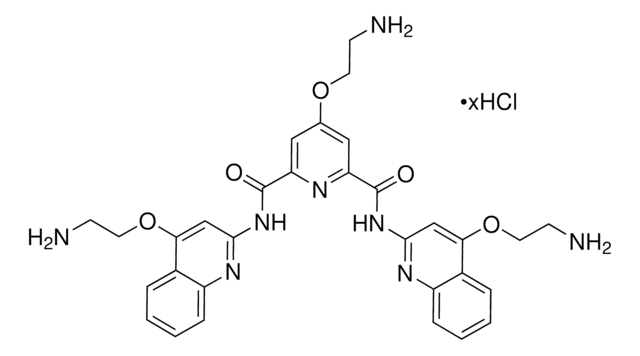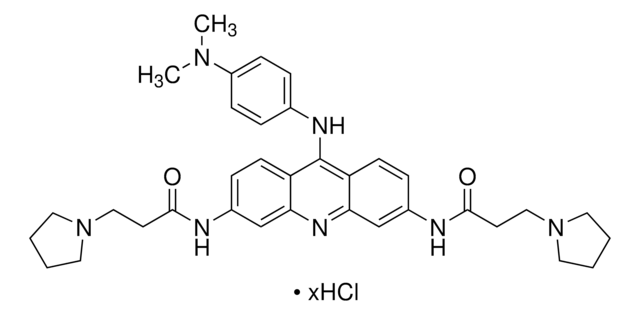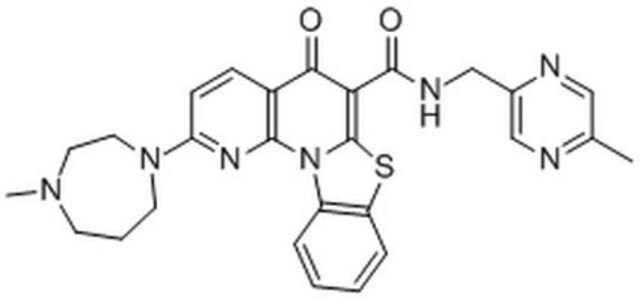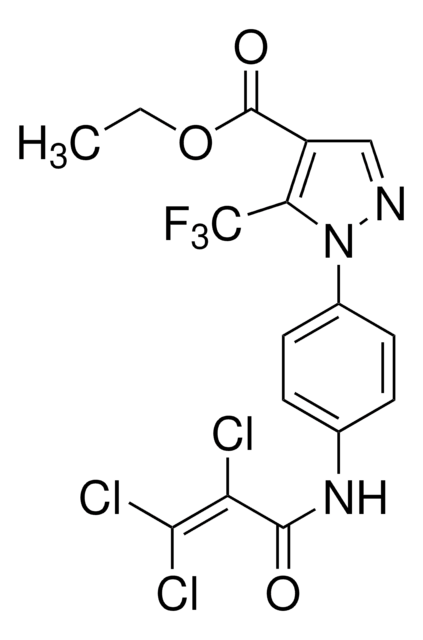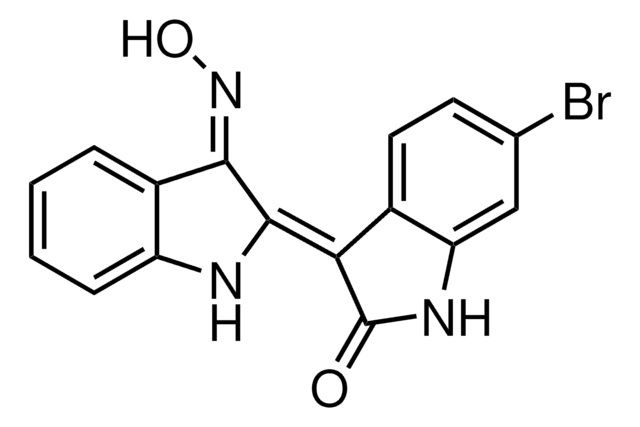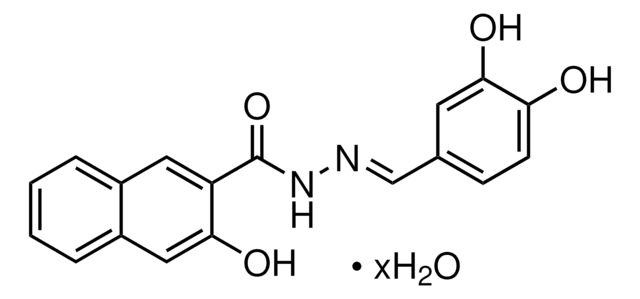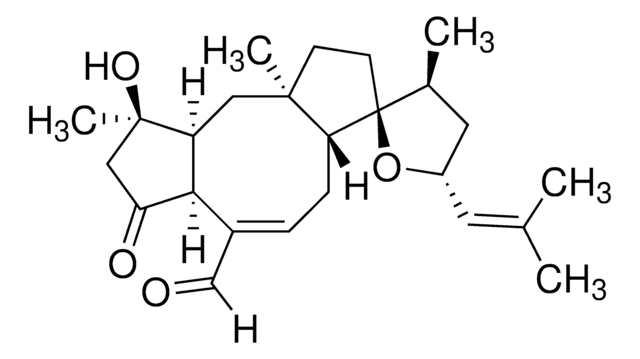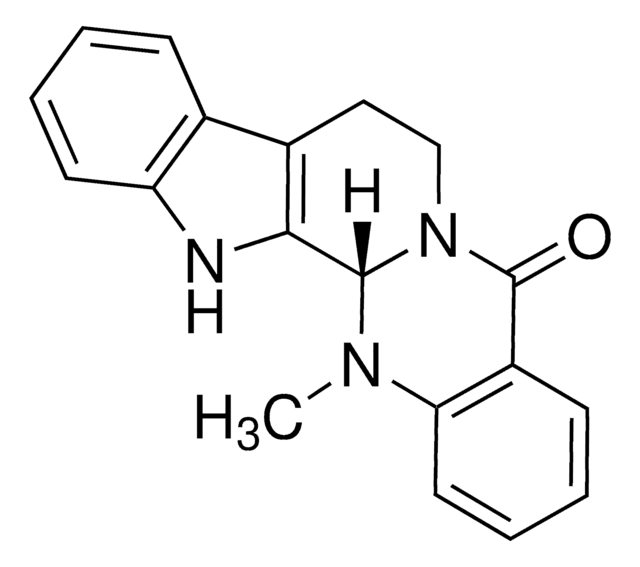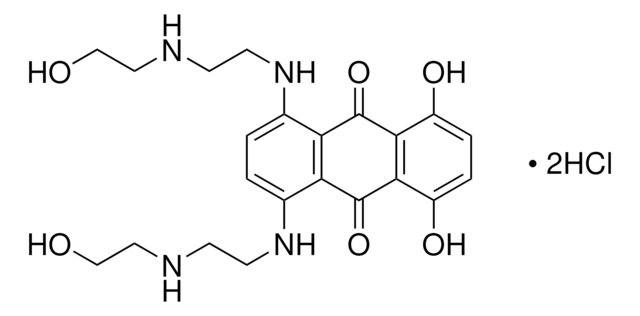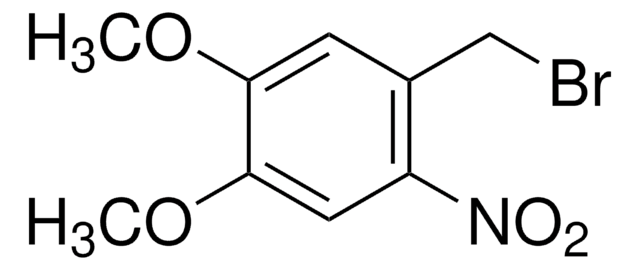SML2298
PhenDC3
≥97% (HPLC), powder, G-quadruplex ligand
Sinônimo(s):
3,3′-[1,10-Phenanthroline-2,9-diylbis(carbonylimino)]bis[1-methylquinolinium] 1,1,1-trifluoromethanesulfonate (1:2), Phen DC3, Phen-DC(3), Phen-DC3
About This Item
Produtos recomendados
Nome do produto
PhenDC3, ≥97% (HPLC)
Ensaio
≥97% (HPLC)
Formulário
powder
cor
white to beige
solubilidade
DMSO: 2 mg/mL, clear
temperatura de armazenamento
2-8°C
cadeia de caracteres SMILES
O=C(NC1=CC2=CC=CC=C2[N+](C)=C1)C3=CC=C4C=CC5=CC=C(N=C5C4=N3)C(NC6=CC7=CC=CC=C7[N+](C)=C6)=O.O=S([O-])(C(F)(F)F)=O.O=S([O-])(C(F)(F)F)=O
Aplicação
- as a quadruplex (G4) ligand to study its effects on the binding of RNA quadruplex (rG4) to nucleolin (NCL)
- as a DNA/RNA G-quadruplexes (GQs) ligand to study its effects on the expression of double homeobox 4 (DUX4) gene
- as a G4 ligand to study its stability and selectivity towards pre-miR-92b rG4 complex and duplex DNA by fluorescence resonance energy transfer (FRET)-melting assay
Ações bioquímicas/fisiológicas
Código de classe de armazenamento
11 - Combustible Solids
Classe de risco de água (WGK)
WGK 3
Ponto de fulgor (°F)
Not applicable
Ponto de fulgor (°C)
Not applicable
Escolha uma das versões mais recentes:
Certificados de análise (COA)
Lamentamos, não temos COA para este produto disponíveis online no momento.
Se precisar de ajuda, entre em contato Atendimento ao cliente
Já possui este produto?
Encontre a documentação dos produtos que você adquiriu recentemente na biblioteca de documentos.
Os clientes também visualizaram
Nossa equipe de cientistas tem experiência em todas as áreas de pesquisa, incluindo Life Sciences, ciência de materiais, síntese química, cromatografia, química analítica e muitas outras.
Entre em contato com a assistência técnica